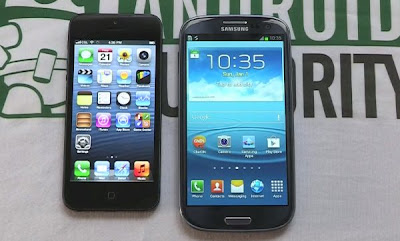A few days ago, just after the iPhone 5 launch, we compared the new iOS device with the Galaxy S3 in a series of posts (drop test, video comparison, benchmarking results and display tests) and in most cases the iPhone 5 proved to be the better device.
Today we’re going to take another look at the display battle between
the two. In our previous coverage, we showed you that the experts at DisplayMate
concluded that the iPhone 5’s display is superior to the Galaxy S3’s
but now we have a new report that says the opposite. Sort of.
A study conducted by IHS
says that the Galaxy S3’s display is thinner and has a wider color
gamut than the iPhone 5’s panel. The Galaxy S3 features a 1.1mm thick
display capable of offering the full color gamut (NTSC standard) while
the iPhone 5 has a 1.5mm thick display that is capable of offering just
72% of that full color gamut.
However, it’s not a clear win for the Galaxy S3, as IHS isn’t completely refuting DisplayMate’s
findings. According to the survey, the iPhone 5 may offer a better
performance thanks to “better calibration, higher brightness and
superior power efficiency,” with Samsung’s display feeling
“oversaturated and unrealistic.”
“Such improvements on the iPhone 5 are consistent with Apple’s philosophy of selecting features designed to yield profitable products that deliver a superior customer experience, rather than of providing technology for technology’s sake,” said Vinita Jakhanwal, an analyst at IHS.
The iPhone 5
offers a better pixel density (326 ppi vs 306 ppi) while the Galaxy S3
has the advantage of featuring true HD resolution (1280 x 720p vs 1136 x
640.) Choosing LCD over OLED could be an advantage for Apple as IHS expressed concern regarding the way organic materials age and OLED’s power efficiency.
According to CNET, DisplayMate’s Raymond Soneira voiced his concerns against the findings of this IHS study, “arguing that the color gamut test IHS conducted was based off of an old standard that has led to incorrect conclusions.”
Ultimately,
it’s down to end users to select their favorite kind of display, and
smartphone. In fact, users may not even perceive during actual
day-to-day smartphone use some of the differences presented by such
expert studies. But that doesn’t mean we won’t see more such comparisons
in the future, especially as next-gen devices from these two smartphone
families come out.

No comments:
Post a Comment